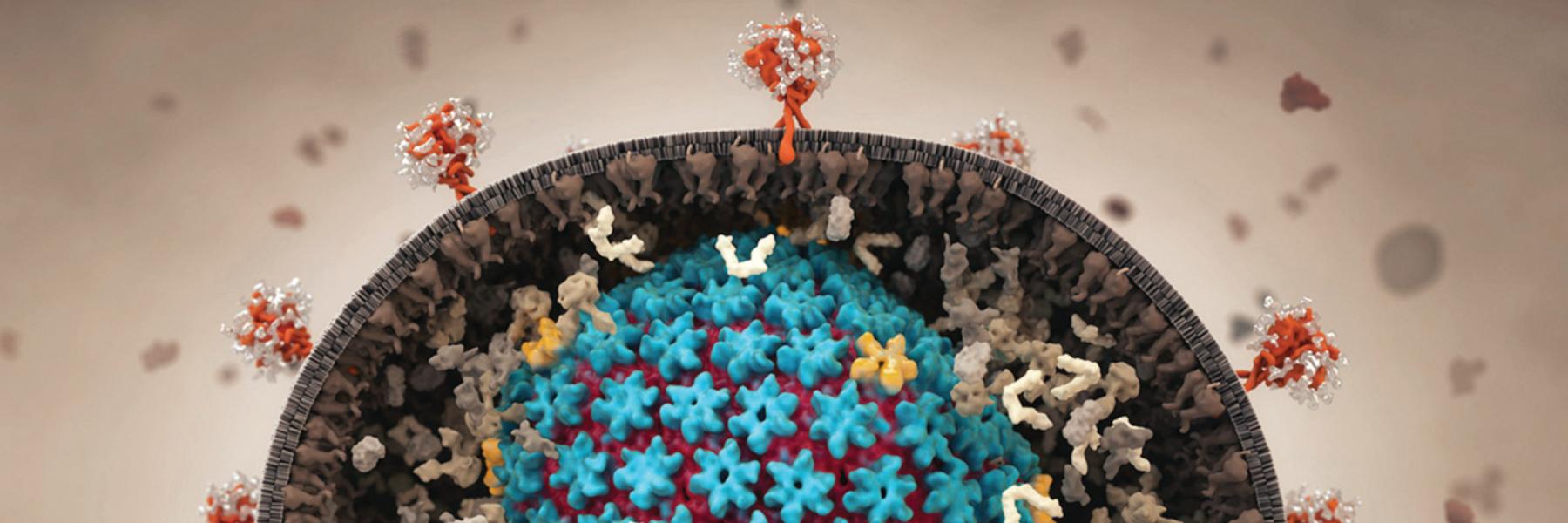
Switching to a once-monthly treatment: ATLAS and FLAIR at 48 weeks
There were good results from two separate studies of once-monthly injections for HIV.
At one year in the studies, individuals receiving the monthly injections saw similar efficacy compared to those who continued to take oral HIV therapy.
The two injections consisted of long-acting cabotegravir and long-acting rilpivirine, given separately.
In the ATLAS (Antiretroviral Therapy as Long-Acting Suppression) study, 93% of the injection group had undetectable viral loads compared to 95% of the group taking the established and proven pills already on the market. All 616 individuals in the study started out with undetectable viral load on at least six months of oral HIV therapy.
Of the persons receiving the injections, 75% had injection site pain (231 individuals), with 1% (four of them) withdrawing from the study because of it.
The majority of those getting shots (nearly 100%) in both studies, however, reported a preference for the monthly shots over daily pills. Not all patients had injection site reactions or had them every time.
Dr. Susan Swindells, who presented the ATLAS results, reported, “My patients [at the University of Nebraska Medical Center in Omaha] say they like not having to take a pill every day and not having to remember their HIV every day.” They also felt less stigma with not having to worry about roommates or co-workers finding their pill bottles. “It has surprised me how much people do like it.”
In the FLAIR (First Long-Acting Injectable Regimen) study, 93.6% of the individuals given monthly injections had undetectable viral load vs. 93.3% of the pill group. There were 283 persons in each group. While 82% of the injection group had injection site reactions, they were reported as mild to moderate (Grade 1 or 2), with a median duration of three days, and decreasing in frequency over time.
Undetectable viral load was defined as less than 50.
Another study, ATLAS-2M, is looking at dosing every two months.
See Abstracts 139 and 140 LB, which also link to the oral presentations. The two-drug medication, which is expected to receive FDA approval late this year, is listed in PA’s 2019 HIV Drug Guide (positivelyaware.com/la-cab-rpv). See also “Built to Last” in the January + February issue.
What is a capsid? New drug on the horizon
Gilead Sciences reported early results with a new type of HIV medication, also given via an injection. This drug might only need to be taken once every three months.
The results are so early, this is the first data in humans. And they were so-called “healthy” test subjects, not living with HIV or other disease.
GS-6207 is an HIV capsid inhibitor. Think of a capsule. HIV has a membrane-like envelope around it that’s called a “capsid.” (This is the first HIV capsid inhibitor ever to go into development.)
Gilead reported GS-6207 was safe and well-tolerated in the 38 individuals who were given one injection. Doses given were 30, 100, 300, or 450 mg. Another two individuals were given a placebo.
The study is ongoing for 20 weeks.
See Abstract 141, which also links to the oral presentation.
Maturation inhibitor
Pharma giant GlaxoSmithKline (GSK) no longer produces HIV medications, but instead puts its HIV drug development into a company off-shoot, ViiV Healthcare. Nevertheless, GSK presented early data in 33 individuals who were off their HIV therapy and given one of four doses of GSK2838232. All doses (20, 50, 100, or 200 mg) were boosted by another med, cobicistat, to achieve greater levels in the blood.
The researchers reported that the tolerability and antiviral activity demonstrated over the 10 days of dosing provided proof-of-concept for taking GSK2838232 (or 232 for short) forward in development.
232 is a second-generation maturation inhibitor. It works differently from previous maturation inhibitors that fell to the wayside during research.
Five individuals experienced six adverse events that were considered mild and related to the drug: headache, somnolence (sleepiness or drowsiness), rash, abnormal dream, and pruritus (itching).
See Abstract 142, which also links to the oral presentation.
A proof-of-concept study of a follow-on maturation inhibitor in development, GSK3640254, is open but not yet enrolling as of press time. (ClinicalTrials.gov Identifier: NCT03784079)
View the illustration, “An ensemble cast,” in the 2019 POSITIVELY AWARE HIV Drug Guide to see where the capsid inhibitor, maturation inhibitor, and other antivirals work.


